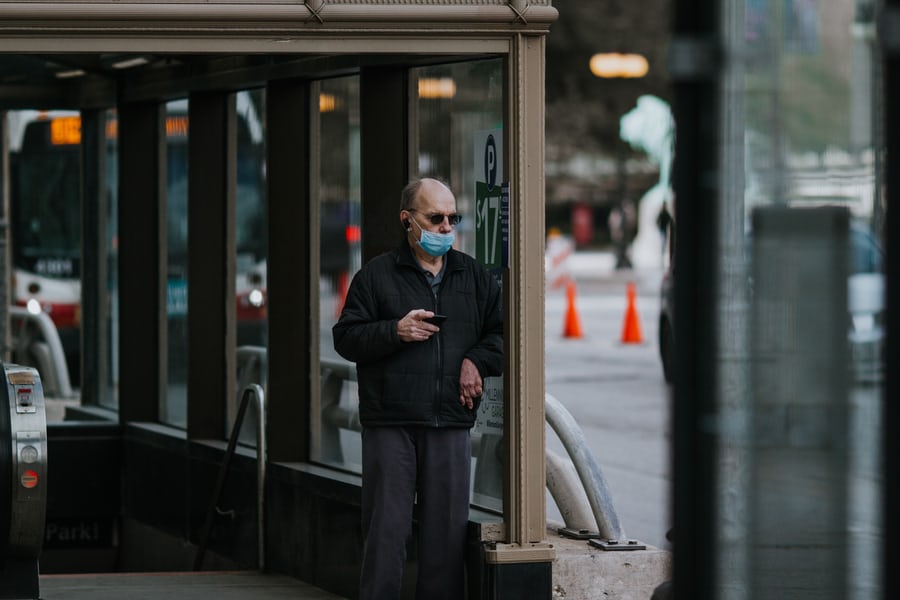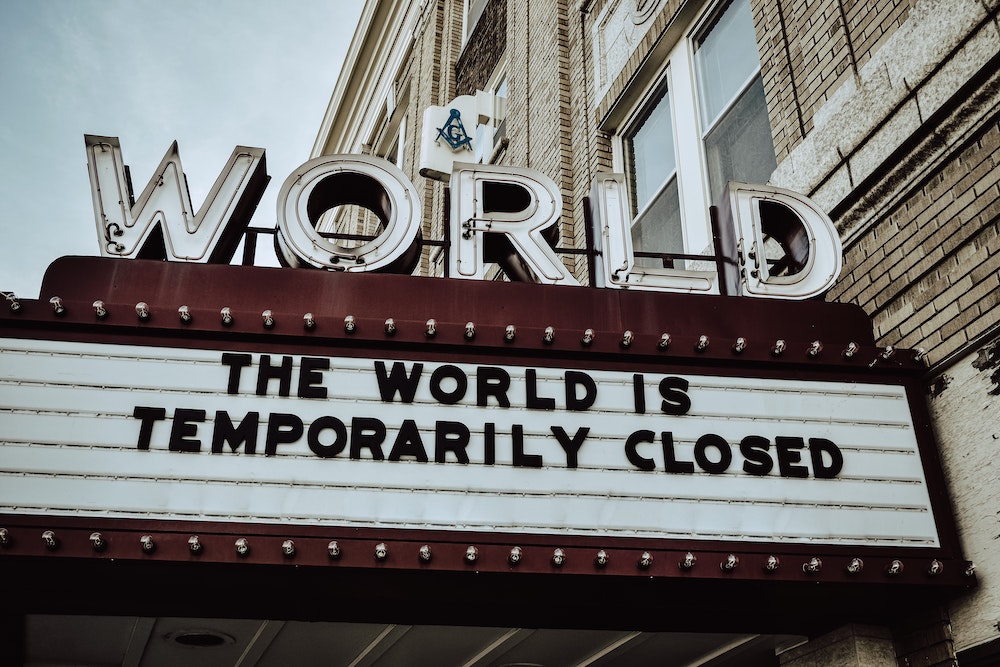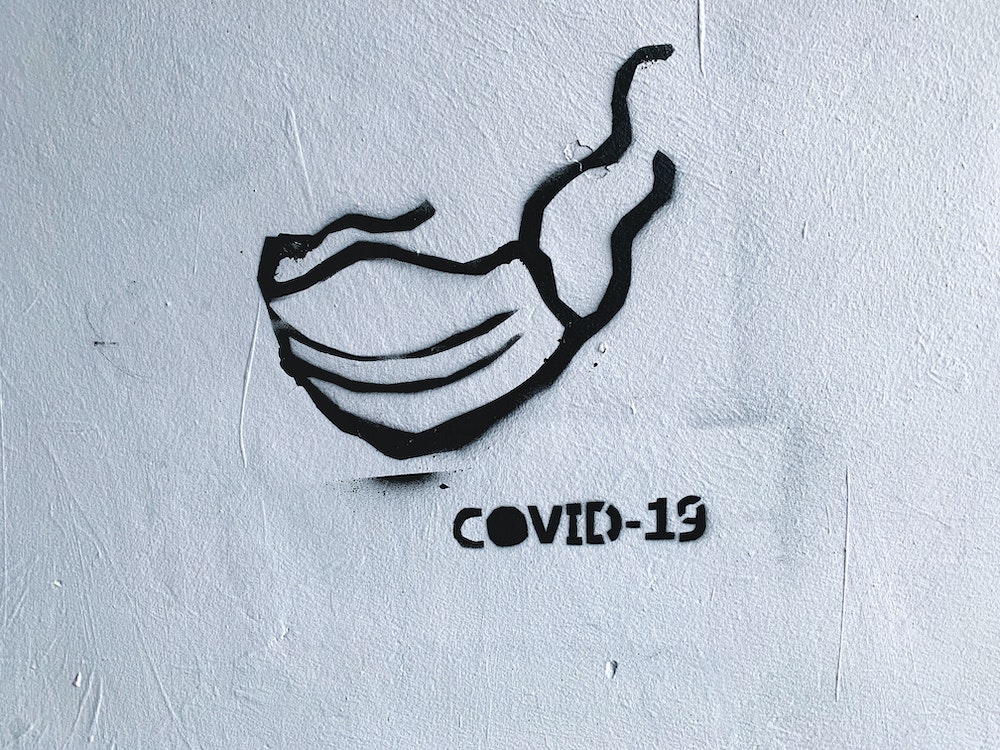This week’s top three summaries: R v SA, 2020 ONSC 2946, Re Application for a Warrant, s. 487.05 Criminal Code, 2020 ONCJ 249, and R v Studd, 2020 ONSC 2810.
R v SA (ONSC)
[May 15, 2020] Judicial Interim Release – Material Change in Circumstances – COVID-19 - 2020 ONSC 2946 [The Honourable Justice Spies]
AUTHOR’S NOTE: Here, the accused was detained in custody for charges of being a party to attempted murder, possession of a firearm along with a number of related offences, and breach of a s. 109 weapons prohibition order. He was previously ordered to be detained on the tertiary ground. The accused brought an application pursuant to s. 520(1) for judicial interim releasing, claiming that the COVID-19 pandemic was a material change in circumstances. One of the arguments by the Crown was that it would be an error to release the accused where the only material change is the impact of COVID-19. Justice Spies disagreed, determining that the COVID-19 pandemic on it constituted a material change in circumstances that required a new balancing of the tertiary ground factors. Justice Spies granted the application and released the accused on bail pending his trial.
Pertinent Facts
[1] The Applicant, S.A., was arrested on October 18, 2019 along with five others, two of whom were youths. The Applicant was charged as a party to attempted murder, possession of a firearm along with a number of related offences, and breach of a s. 109 weapons prohibition order. He was ordered detained only on the tertiary ground on January 15, 2020 (“the Detention Order”) after a contested bail hearing in the Ontario Court of Justice before Justice Pringle that proceeded on January 7th and 10th, 2020. Oral reasons for the Detention Order were given by Pringle J. on January 15, 2020.
[2] Mr. S.A. has brought this application pursuant to s. 520(1) of the Criminal Code, R.S.C., 1985, c. C-46 for an order setting aside the Detention Order and granting him judicial interim release pending his trial on the basis that there has been a material change since the Detention Order was made; namely, the current COVID-19 pandemic. In addition, it is submitted that the learned judge erred in her application of the law on the tertiary ground.
[4] Mr. Schembri, on behalf of the Crown, was prepared to accept for the purpose of this hearing that, in light of the ongoing COVID-19 pandemic, there has been a material and relevant change in circumstances since the Detention Order within the meaning of R. v. St. Cloud, 2015 SCC 27, [2015] 2 S.C.R. 328, at para. 121. There have been a significant number of bail and bail review cases dealing with the impact of the COVID-19 pandemic, including one of my decisions, R. v. Ali, 2020 ONSC 2374, and there is near unanimous agreement that the COVID-19 pandemic constitutes a material change.
[5] As for the submission made by Mr. Klumak on behalf of Mr. S.A. that the learned judge erred, I do not find that Pringle J. made any error of law in her analysis for the reasons I will come to.
[6] In any event, given my conclusion that the ongoing COVID-19 pandemic presents a material change in circumstances, I have concluded that I am authorized to repeat the analysis of whether or not Mr. S.A. should be detained under s. 515(10) of the Criminal Code as if I were the initial decision-maker.
The Issues and Positions of Counsel
[8] Mr. Klumak submitted that Mr. S.A. should not be detained on the tertiary ground. It is his position that the learned judge erred in placing too much emphasis on the brazen nature of the shooting given that Mr. S.A. was not a shooter, was never in physical possession of a firearm and there is no evidence that he even knew there was going to be a shooting. Mr. Klumak further submitted that the tertiary ground has been satisfied because given the COVID-19 pandemic, there is an increased risk of infection in an institution. It is his position that if the public was aware that Victim #1, his brother and his brother’s girlfriend had been released, knew that Mr. S.A. was not a shooter and that his preliminary hearing that was to take place May 6 and 7, 2020 has now been adjourned for ten weeks when a new date will set, the public would not lose confidence in the administration of justice if Mr. S.A. were released on the strict terms of bail proposed.
[9] It is Mr. Schembri’s position that the trial judge did not err and that because there is no medical evidence before this court that Mr. S.A. faces increased risk should he contract COVID-19, he should be detained on the tertiary ground.
[10] This case is different in two respects from all of the cases of this court that I am aware that have considered the impact of COVID-19 on bail. First there was no issue with the secondary ground before Justice Pringle and this bail review turns solely on the tertiary ground. Secondly, there is no evidence that Mr. S.A. is more susceptible to infection from COVID-19 or is more likely to suffer more serious consequences because of any current health condition, if infected. As a result, Mr. Schembri argued that the COVID-19 pandemic has no impact on the tertiary ground in this case and there is no basis upon which Mr. S.A.’s release should be granted.
COVID-19 as the Only Change in Circumstance
[53] There have been a considerable number of cases from this court that have considered the impact of the COVID-19 pandemic on a bail or bail review application. Having reviewed many of those cases I would say that there has been an evolution in the caselaw largely because there is now more evidence available as to the risk of COVID-19 in jails and prisons. I refer, in particular, to the opinion of Dr. Orkin that was made available to me in Ali and again now, and which has been referred to in some cases. Furthermore, I am not aware of any case prior to my decision in Ali that considered the fact that there has now been a serious COVID-19 outbreak in an Ontario institution, namely the one that resulted in the closure of OCI.
[54] I will consider only those cases that are relevant to the submissions of counsel. Mr. Schembri made two arguments as to why I should not consider the COVID-19 pandemic in this case given there is no evidence that suggests that Mr. S.A. is part of a vulnerable group that is more susceptible to COVID-19 or at risk of more serious complications if he is infected with the virus. His first argument is that in light of recent cases from the Court of Appeal, which, of course, are binding on this Court, I can only consider COVID-19 as a factor in considering the tertiary ground if there is evidence that Mr. S.A. is particularly vulnerable to infection by COVID-19 or is at higher risk of complications if infected. There is no such evidence in this case.
[55] This is an important issue. I am not aware of any other case where this particular argument has been made. Furthermore, as I said in Ali, at para. 72, although it is certainly not a universal view, “many judges are now placing an increased focus on the strength of the release plan in terms of protection of the public and the impact of COVID-19 on the tertiary ground even when there is no evidence that a particular defendant is at a higher risk if he or she contracts COVID-19.” I should add that in respect of this proposition, Mr. Schembri submitted that in those cases where COVID-19 has been considered, there have also been other changes; either an improved release plan and/or a change in the Crown’s case resulting in it being a weaker case or a less serious case against the defendant.
[102] For these reasons, I restate what I said in Ali, although I will qualify it somewhat. In these extraordinary times, although the presence of COVID-19 is not a free pass to “get out of jail”, if there are no primary concerns and the secondary ground is satisfied with a strict release plan that ensures that a defendant can be adequately supervised to protect the public from further risk, as is the case before me, then in most cases, to maintain confidence in the administration of justice, release on stringent terms ought to be ordered, notwithstanding the strength of the usual four factors that might otherwise justify detention on the tertiary ground.
[103] I should address one further argument made by Mr. Schembri. As already stated, he submitted that in those cases where COVID-19 has been considered as a material change, there have also been other changes; either an improved release plan and/or a change in the Crown’s case resulting in it being a weaker case or a less serious case against the defendant and that I would be in error to release Mr. S.A. where the only material change is the impact of COVID-19. I disagree. Even if that is true of the cases that have considered the impact of COVID-19 on bail to date, clearly the outcome in this case would have been no different if Justice Pringle had not found the secondary ground to be satisfied and I accepted an improved plan from Mr. S.A. and found that he had satisfied the secondary ground before turning to the tertiary ground. As Mr. Schembri emphasized, the secondary and tertiary grounds are independent grounds, and either or both can justify detention or not. In this case, I had the benefit of the conclusions of Justice Pringle on the secondary ground with which I agree. It was the tertiary ground that was in issue and a consideration of the material change presented by the COVID-19 pandemic. Having come to this bail review with that being the only issue, it is irrelevant whether the statutory factors on the tertiary ground have changed or not. It is how they are to be balanced against this new reality that matters.
Disposition
[106] For these reasons, I grant the application and vacate the detention order issued by Justice Pringle and issue an order granting the Applicant, S.A., judicial interim release upon his entering into a recognizance with the following two sureties: S.S. in the amount of $200,000 and R.L. in the amount of $200,000, without deposit of money or other valuable security, pending his trial and on the following conditions…
Re Application for a Warrant, s. 487.05 Criminal Code (ONCJ)
[May 20, 2020] Warrant – Taking of Bodily Samples – COVID-19 - 2020 ONCJ 249 [The Honourable Justice D Moore]
AUTHOR’S NOTE: Here, an application for a warrant for the taking of bodily samples pursuant to s. 487.05 of the Criminal Code was brought. Even though the statutory preconditions for the issuance of the warrant were met, Justice Moore dismissed the application without prejudice because, in the absence of information about Covid-19, they were unable to determine whether it is in the best interests of the administration of justice to issue the warrant.
Reasons for Decision
[1] I am satisfied that the statutory preconditions for the issuance of the warrant set out in ss. 487.05(1)(a)-(d) of the Criminal Code have been met.
[2] That does not end the matter, however, as I must still determine whether I am satisfied that it is in the best interests of the administration of justice to issue the warrant.
[3] This application is brought in the midst of the Covid-19 pandemic [“Covid-19”], which has had a profound impact on society in general and on the operation of courts and detention facilities in particular.
[4] Mr. O. is currently detained at the Toronto South Detention Centre.
[5] The Information to Obtain does not contain any reference to Covid-19.
[6] In the absence of information about Covid-19, I am unable to determine whether it is in the best interests of the administration of justice to issue the warrant. While the taking of a DNA sample in normal times is a fairly routine (albeit very intrusive) matter, these are not normal times. The taking of a sample during Covid-19 might well expose Mr. O., the involved officers, employees of the institution and/or other inmates to unacceptable or unnecessary risk and disruption. The proper administration of justice requires that I understand the impact of the order I am asked to make before I make it. I am also required to consider, pursuant to s. 487.06(2), imposing terms and conditions in the warrant that I consider advisable to ensure that the taking of the sample is reasonable in the circumstances. I am unable to do so based on the evidence in the Information to Obtain.
[7] Regarding future applications in this matter (and perhaps similar applications in other cases), the following issues might be addressed (these are not necessarily preconditions to issuance of a warrant):
- Can the sample be taken safely?
- Do Covid-19 considerations mean that a sample other than a blood sample might be more safely obtained?
- Has the officer tasked with taking the sample been given any additional training in relation to Covid-19?
- Will there be screening of the officer tasked with taking the sample to make sure he or she does not have any active symptoms prior to entering the institution and has not been in contact with a Covid positive or presumptive individual in the previous 14 days?
- What personal protective equipment is available to both the officer taking the sample and to Mr. O.?
- Can the video recording of the taking of the sample be achieved without exposing Mr. O. to more than one officer?
- Are there any potential collateral consequences for Mr. O. from coming into contact with the officer(s)? For example, will he be required to go into isolation for 14 days after providing the sample?
- What is the potential impact on the operations of the detention centre, its employees, and other inmates?
- Is there any urgency to proceeding with the request at this time or is it possible to delay the collection of the sample until conditions improve?
- Does Covid-19 create any issues for the implementation of Mr. O.’s right to consult with counsel prior to the taking of the sample? Will he be able to access a telephone in private? Counsel have reported significant delays, sometimes for days, in getting access to their clients.
[8] The Application is dismissed, without prejudice to a further application being brought that addresses the Covid-19 issue.
R v Studd (ONSC)
[May 4, 2020] Sentencing – Fit and Appropriate Sentence – COVID-19 - 2020 ONSC 2810 [The Honourable Justice Davies]
AUTHOR’S NOTE: Here, the offender pled guilty to one count of sexual assault with a weapon and one count of sexual assault. The Crown sought a sentence of four years in custody – two and a half years for the first sexual assault and a year and a half for the second. The Defence submitted that a sentence of time served would be appropriate when taking into account the credit for pre-sentence custody and the harsh conditions of his detention. The offender has spent 454 days in custody, which is approximately 22 and a half months at 1.5 credit. Due to the 204 full or partial lockdowns, the offender was found to be entitled to one additional day of credit for each one of the 198 days he experienced a lockdown because of staff shortage. This brought his pre-sentence detention to 879 days in custody, which was almost 2 years and 5 months. After considering the aggravating and mitigating factors, Justice Davies determined that the appropriate sentence was 24 months on the first incident and 9 months on the second, leaving 4 months left to serve. Due to the compromised immune system of the offender and his heightened risk of COVID-19, the remaining time to be served was reduced to one day in custody followed by a period of probation for two years. While not perfect, Justice Davies found that the 19 months already served would adequately meet the sentencing objectives of denouncement and deterrence.
Pertinent Facts
[1] Mr. Studd pled guilty to one count of sexual assault with a weapon and one count of sexual assault. The victim of each offence is Mr. Studd’s former partner, T.N.
[6] The Crown argues that the appropriate sentence in this case is four years in custody: two and a half years for the first sexual assault and a year and a half for the second. The defence takes the position that once Mr. Studd is given credit for pre-sentence custody and the harsh conditions at the Toronto South Detention Centre (TSDC), he has already served enough time in custody to satisfy the principles of denunciation and deterrence.
[7] The issues for me to decide in this case are as follows:
- What is the appropriate sentence in this case given the aggravating and mitigating factors?
- How much credit should Mr. Studd be given for his pre-sentence custody?
- Should Mr. Studd’s sentence be further reduced as a result of the risks associated with COVID-19?
[8] For the reasons that follow, I find the appropriate sentence in this case is 33 months in custody: 24 months for the first sexual assault and 9 months for the second. I find that Mr. Studd is entitled to 681 days' credit for the time he spent in pre-sentence custody. He is entitled to a further 198 days' credit for all the lockdowns he experienced at the TSDC. He has, therefore, already served the equivalent of approximately 29 months. I am prepared to reduce his sentence by four months because of the risk he would face if he were to remain in custody of contracting COVID-19 and being subject to further lockdowns as a result of the public health emergency. I, therefore, sentence Mr. Studd to one day in custody to be followed by a period of probation for two years.
Sentencing Analysis
[11] The sentence range for cases involving forced intercourse with an intimate partner or former partner is 21 months to four years' imprisonment [citations excluded]. In this case, the first incident involved forced penetration with a bottle. The second incident involved touching with no penetration.
[14] I find that consecutive sentences are appropriate in this case. Although T.N. is the victim of both sexual assaults and they both took place during their relationship, they do not arise from the same event or series of events. I also find that the sentence for the first sexual assault must be much longer than the sentence for the second sexual assault to reflect the fact that the first sexual assault involved vaginal penetration with an object. Finally, I find that the total sentence imposed for both offences cannot be at or near the bottom end of the established range for these offences.
[15] There are a number of other features of these sexual assaults that makes them serious.
…
[21] The sentence imposed in this case must also take into account Mr. Studd’s personal circumstances and any mitigating factors.
[22] Mr. Studd is 55 years old. He has a very lengthy criminal record consisting mostly of property offences and failing to comply with Court orders. Counsel advised that Mr. Studd has addiction issues and many of his past convictions relate to his addiction. Importantly, Mr. Studd has never been found guilty of sexual assault before. He only has two prior convictions for assault on his record from 1988 and 2013. He also has one prior conviction for assault with intent to resist arrest from 1995. The longest sentence he received for any crime of violence in the past is 45 days in custody.
[23] The most important mitigating factor in this case is that Mr. Studd pled guilty. He has taken full responsibility for his conduct and saved T.N. from having to testify at trial.
[24] Mr. Studd also expressed his remorse for his conduct. When asked if he had anything to say, Mr. Studd said that all he wants is for T.N. to be able to move on from the harm he caused. I have no doubt that Mr. Studd’s comments were sincere.
[25] Finally, Mr. Studd completed eight educational programs while in custody that will contribute to his long-term rehabilitation, including “Connections”, “Supportive Relationships”, “Anger Management”, “Substance Abuse” and “Managing Stress”. These programs are relevant to the root causes of these offences and his past offending behaviour. I find that by completing these programs, Mr. Studd has demonstrated insight into the issues he needs to address and has taken positive steps towards his own rehabilitation.
[26] Having considered all the mitigating and aggravating factors in this case, I find that a sentence of 24 months is appropriate on the first incident and 9 months is appropriate on the second. Sentencing is a highly individualized process. No two cases are alike. Nonetheless, the Crown provided me with two cases in which a sexual assault was committed using a bottle that provided me with some guidance in this case.
[29] The fit and appropriate sentence in this case is 24 months in relation to the sexual assault with a weapon and nine months in relation to the sexual assault, to be served consecutively.
Credit for Pre-Sentence Custody
[30] Mr. Studd has spent 454 days in pre-sentence detention. The Crown agrees that he should be given one and a half days of credit for each day he has spent in pre-sentence detention. He has, therefore, served the equivalent of 681 days in custody, or approximately 22 and a half months.
[31] Mr. Studd has been detained at the TSDC since February 8, 2019. During that time, there have been 204 full or partial lockdowns at the institution [Counsel obtained lockdown records from the TSDC, which show that there were 198 full or partial lockdowns between February 9, 2019 and April 6, 2019. Mr. Studd advised the Court that he believes there have been six lockdowns since April 6, 2019. Both counsel agreed that I should accept Mr. Studd’s evidence on this point, which brings the total number of lockdowns to 204]. In other words, Mr. Studd has been subjected to some sort of lockdown almost 45 percent of the time he has been in custody. The TSDC provided an explanation for each lockdown. All but six of the lockdowns Mr. Studd experienced were caused by a staff shortage at the institution. Counsel for Mr. Studd argues that he is entitled to enhanced credit because of the persistent problem with lockdowns at the TSDC.
[34] Occasional lockdowns for security or operational issues are to be expected in large correctional facilities like the TSDC. However, the number of lockdowns at the TSDC is simply unacceptable and the reason for the lockdowns is unconscionable. Staff shortages at the TSDC have been a problem for years [R. v. Persad, 2020 ONSC 188 at para. 2 and 29]. The failure to address this problem reflects a shocking lack of concern on the part of the institution and/or the government to the rights of individuals detained in pre-trial custody. Adequate resources must be allocated to ensure that inmates in pre-sentence custody are treated in a humane manner.
[35] I find that Mr. Studd is entitled to one additional day of credit for each one of the 198 days he experienced a lockdown because of staff shortage at the TSDC. When added to Mr. Studd’s statutory credit for pre-sentence detention, he has served the equivalent of 879 days in custody, which amounts to almost exactly 2 years and 5 months.
Impact of COVID-19
[36] The remaining question is whether Mr. Studd’s sentence should be further reduced to account for the risk of contracting COVID-19 in custody and the conditions in which he will be detained if a further period of imprisonment is imposed.
[41] I am entitled to consider whether a particular sentence would have a more significant impact on Mr. Studd because of his circumstances [R. v. Suter, 2018 SCC 34 at para. 48]. I heard that Mr. Studd has a compromised immune system because of medication he is taking for a pre-existing condition. Given the current state of medical knowledge about COVID-19, I find that Mr. Studd is likely at a heightened risk in relation to the virus.
[42] The Supreme Court of Canada has recognized that there will be situations that call for a sentence outside the normal sentencing range because of the specific circumstances of a particular case [R. v. Lacasse, 2015 SCC 64 at para. 58]. However, proportionality must still prevail. Individual or collateral consequences cannot reduce a sentence to the point that it becomes disproportionate to the gravity of the offence or the moral blameworthiness of the offender [Suter, supra at para. 56].
[43] The risks posed by the COVID-19 pandemic to those who are incarcerated is one of those circumstances that can be taken into account when deciding whether a sentence below what would otherwise be imposed is nonetheless just and appropriate [R. v. Hearns, 2020 ONSC 2365 at para. 18]. Were it not for the COVID-19 pandemic, I would order Mr. Studd to serve a further four months in custody.
[44] If I sentenced Mr. Studd to a further four months in jail, he would be subject to particularly harsh conditions throughout that time. He would face an ongoing risk of infection. He would also experience restrictive conditions as correctional institutions attempt to prevent infections and manage any outbreaks.
[45] As the Court noted in R. v. Hearn, our sense of community, decency and humanity during this public health emergency must extend to incarcerated individuals. If the time an individual has already served in custody will address the principles of sentencing, even imperfectly, the Court should not impose a further term of imprisonment in the unique circumstances of the current global health crisis. In those cases, a sentence that will ensure immediate release from custody will be just and appropriate, even if it is below the range that might otherwise be imposed [Hearns, supra at para. 24].
[46] I am satisfied that the 29 months already served by Mr. Studd will adequately, if not perfectly, denounce his very serious and violent conduct. It will also serve to deter him and others from similar conduct to the extent that any particular sentence has that effect. While a 29‑month sentence is slightly below the sentence I would ordinarily impose, it is not dramatically outside the range nor disproportionate.
[47] Having regard to the real risk associated with ongoing incarceration during the COVID‑19 pandemic, I sentence Mr. Studd to one day in custody followed by a period of probation for two years. The terms of his probation will be…






